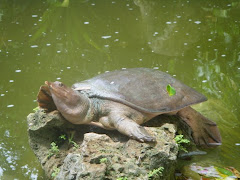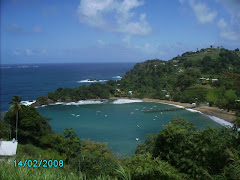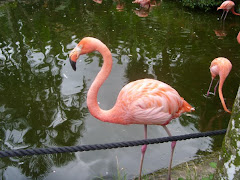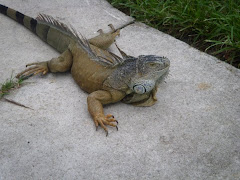Leatherbaack Sea Turtle
Snake neck Turtle
Central American Ornate Wood Turtle
Russian Land Tortoise
Texas Box Turtle - found in Florida
UNDERSTANDING DARWIN'S THEORY OF EVOLUTION
Charles Darwin, (February 12, 1809 – April 19th 1882) was an English Naturalist who believed that all life forms are interconnected and come from a common ancestor. From the birds to oranges to fishes to trees.
The idea of evolution became widely accepted by the scientific community in Darwin’s lifetime and his theory of evolution quickly became the catalyst explanation of the process of evolution around the 1930’s.
Charles Darwin developed his interest in natural history while studying medicine at Edinburgh University, followed by theology at Cambridge. He was considered an established geolists after his five year voyage to Beagle. His publications of his journal of his voyage made him a prominent author.
Whilst on his voyage, Darwin collected several fossils, which propelled his interest in the perplexity of geographical distribution of these fossils. Darwin studied the transmutation of species which lead to his theory of natural selection. This was followed by his study of human evolution and sexual selection in “The Decent of Man, and Selection in Relation to Sex. Next came “The Expression of the Emotions in Men and Animals”. He also published a series of books and his final book was on the study of earthworms and their effect on soil.
When Darwin dies, he was one of only five 19th century UK non-royal persons to be honoured by a state funeral. Charles Darwin was buried in Wesminister Abbey close to John Herschel and Isaac Newton.
CHARLES DARWIN AGED 51 YEARS OLD

EVOLUTION OF TURTLES
Turtles are scientifically referred to by several names such as Chelonia, Chelonii, Testudines, and Testudinata. Other commonly known names are turtle, tortoises and terrapins.
Although reptiles became part of the evolutionary process some 300 million years at the end of the Paleozoic era, fossils were only traced about 80 million years ago in the dinosaur era, which was the latter part of the Triassic period.
By the end of the Cretaceous, Testudines advanced to its maximum diversity, but unfortunately today there are only 260 surviving species that represent 13 families.
Proganochelys is the most primitive turtle. Essentially all other species fall under the Casichelydia.
The Proganochelys shows primitive attributes which do not show up in modern turtle species. A fossil that was found indicated that it was a larger, freshwater version to the modern snapping turtle.
Therefore this can be used as a benchmark for the evolution of the turtle.
Another listed primitive species is the oldest sideneck called the Proterochersis. Comparatively speaking to other sidenecks, their pelvis is also fused to their shell.
It is said that because little fossil evidence was located, the evolution of the turtle happened rather quickly, perhaps by a minute genetic change causing a huge impact. It is also suggested that because of their existence in the Triassic period, phylogenetic arrangements took place within certain groups of turtles within this period.
At the same time, according to Peter A. Meylan’s research (http://tolweb.org/Testudines/14861), the turle species have one common thread among them. They are quoted as follows:
- All turtles have a bony shell consisting of a carasopace formed from coastal bones with fused ribs, neural bones with fused thoracic vertebrae, and peripheral bones; a plastron formed from interclavicle, clavicle and three to five additional pairs of dermal bones sutured together. The caraspace and plastrone articulate at the lateral margin, enclosing the shoulder girdle and the pelvic girdle. It is incorporation of the ribs into the caraspace that results in the girdles being enclosed by ribs (see Rukes, 1929 for developmental studies)
- In all turtle the quadrate is concave posteriorly and exposed laterally on the cheek. The squamosal is limited to the dorsal half of the cheek, and the quadratojugal and quadrate are relatively large. This is in contrast to the primitive amniote condition in which the quadrate is small and entirely covered laterally by a large sqamosal.
- Postparietals are absent so that the post temporal fenestrra is bordered only be parietals and supratemporal in the most primitive turtle Proganochelys
- The maxilla, premaxilla and dentary are without teeth but rather covered by a horny triturating surface
- The stapes is solid and rod-like, without a framen or process as seen in captorhinids and generalized amniotes
- The postfrontal is absent, resulting in broad contact between prefrontal and postorbital, and between the frontal and postorbital
Undoubtedly there is a common thread of similarities that run through the genetic make up of each specie. I also note that there are vast differences in features and adaptabilities due to the evolution of the Testudine. Let us take a closer look at several species on how the turtle has survived and kept up with the many centuries of evolution.
LEATHERBACK SEA TURTLE
Leatherback turtles have been around in some form since the first true sea turtles evolved over 110 million years ago during the Cretaceous.
The dermochelyids, as represented by the single living species D. coriacea, are close relatives of the Family Cheloniidae which contain the other species of extant sea turtles. However, phylogenetic analysis has determined their sister taxon to be the extinct Family Protostegidae which also included species with no hard carapace.
The Leather Back Sea Turtle, scientifically termed Dermochelys coriacea, is the largest of all marine turtles. It is the only species in the genus Dermochelys.
Dermochelys coriacea adults are about one to two meters long and weigh from 250 to 700 kilograms. They have been known to grow as large as a car!
The largest turtle of this species found was just over three meters from head to tail and weighed over 900 kilograms. That particular specimen was found on a beach in Wales in the North Atlantic.
Leatherback turtle have a large, dorsoventrally flattened, round body with two pairs of appendages, their head is large head and they have a short tail. The leatherback's flattened forelimbs are specially adapted for swimming in the open ocean. They have no caws from both pairs of flippers. Their flippers are the largest in proportion to its body among the extant sea turtles. The front flippers can grow up to 270 centimeters in larger specimens. These turtles have several distinguishing characteristics that differentiate it from other sea turtles. Its most noticeable feature is that they do not have the usual bony carapace of the other extant sea turtles. Instead of scutes, the leatherback's carapace is covered by its thick, leathery skin with embedded minuscule bony plates.
Seven distinct ridges arise from the carapace, starting from the anterior and ending at the posterior margin of it’s back. The entire dorsal’ surface is colored dark grey to black with a sporadic scattering of white blotches and spots and it’s underside is lightly colored.
Leatherbacks are found mainly in the open ocean. They prefer deep water but can be often seen near land as their feeding grounds have been determined to be near land.
Their diet is almost entirely is composed of jellyfish so much so that they have been deemed to play an important part in the control of jellyfish population. They have also been known to fee on other marine organisms such as tunicates and cephalopods.
Females are known to mate every two to three years, although there have been records of leatherbacks having capabilities of breeding annually. The can lay up to nine clutches in one breeding season. The average clutch size is around 110 eggs with an 85% variable.
PICTURE OF LEATHERBACK TURTLE

Snakeneck Turtle – Australian and African
The Snakeneck turtle, scientifically termed as Chelodina longicollis derived from the sub family Chelodininae. Its physical characteristics consists of a skinny long neck, small head and it can grow up to 10 inches. The shape of the Snakeneck is oval and tends to carry a shallow groove in the center which can be more noticeable in other specimens. Its plastron is wide, cream-colored and has a dark design which runs along the seams of the scutes.
This species can be found in weedy lagoons, swampy areas, billabongs and slow-moving backwaters.
When this turtle feels that he is being threatened, he will emit an offensive smelling fluid coming from his musk glands to deter his predators, hence his given common name “stinker”.
The female lays her eggs around the beginning of summer and can lay between 2 and 10 eggs on the bank of her habitat. They will lay up to 1 to 3 clutches per year.
Snakenecks, are canivores and have been known to feed on fish, frogs, insects, worms and crustaceans.
PICTURE OF SNAKENECK TURTLE

Central American Ornate / Wood Turtles
The Central American Wood Turtle, scientifically termed Rhinoclemmys pulcherrima manni is one of four subspecies of Painted Wood Turtles (Rhinoclemmys pulcherrima).
The Ornate wood turtle is the most popular species of Rhinoclemmys found in the pet trade.
There are about eight species of Wood Turtles excluding several subspecies in the Rhinoclemmys line which can be found from Mexico to Central America.
The Ornate turtle can grow up to 8 inches in length, although other larger species can reach sizes up to 14 inches. Their colors vary in an array of shades from swirls or orange, yellows and black on the caraspace to bright washes of pinks and reds on the pastron.
In natural habitat, they can be found living near we forests, moist woodlands and rain ponds. However, they are popular in the pet industry as they are well-tempered and manageable as they are known to be sociable and intelligent and can easily be handfed.
The ornate wood turtle has been proven to breed easy even in captivity. They require a period of hibernation with temperatures of about 60F to 65F. Rain also plays a very important part in the courtship and breeding of this species.
Females can lay up to 2 to 3 clutches per year and the hatchlings are be hardy and grow fast when fed a healthy diet.
In the wild, they are herbivores and consume many plants, although occasionally they have been known to eat insects and worms.
When in captivity, they strive on fruit, vegetables, worms, insects, crickets and plants.
PICTURE OF CENTRAL AMERICAN ORNATE WOOD TURTLE

Russian Land Tortoise
The Russian Land Tortoise, scientifically referred to as Agrionemys horsfieldii. (Testudo horsfieldii).They are also known by many names such as Steppe tortoise, Afghanistan tortoise, Four-toed tortoise and also the Russian box turtle.
Initially, it was classified as a Testudo sp. but was recently was given its own sub-genus Agrionemys.
The Russian Tortoise is the easternmost out of the five species known as Mediterranean tortoises. They are called Mediterranean because their native habitat are in the proximity of the Mediterranean Sea which is situated south of Europe and North Africa.
These turtles has a rounded caraspace and can grow up to 6 to 8 inches in length although there has been the occasional report of a few growing up to 9 inches. Their caraspace is significantly flattened along the vertebral scutes. The colours of the caraspace varies from a light tan to yellow-green to orange. These colours are usually accompanies by brown or black markings on the larger part of the scute. The plastron has brown or black blothes on each scute and in some cases it may be all black. There is no plastral hinge between the abdominal and femoral scutes which occurs in other Mediterranean tortoises.
The rear marginal scutes, on either side of the tail, are large and are somewhat serrated. This feature is significant in the male more than in the female.
The tip of the tail is hard and bony. Males tend to have a bigger tail compared to the female. The tortoise’s skin is usually yellowish-tan. This tortoise is the only Testudo with four claws on each foot, hence its common name, the four-toed tortoise.
PICTURE OF RUSSIAN LAND TORTOISE

Texas Box Turtle
Two species of box turtles are found within Texas. One is Terrapene carolina (represented by one subspecies, T. c. triunguis, the three-toed box turtle).The other is Terrapene ornata (including T. o. ornata, the ornate box turtle, and T. o. luteola, the desert box turtle).
This turtle falls under the order of the Chelonia and is part of the Emydidae family.
Box Turtles has a distinguished feature where they are have one single hinge by having a single hinge at the front of the lower shell (plastron), allowing them to fold it up and closing the front of the shell entirely; thus the common name of "box turtle."
Their caraspace is high domed and steep margined with variable marking, concentric growth furrows can be seen on the caraspace. The toes are slightly webbed and the jaw slightly hooked.
Males compared to females are slightly larger. The posterior lobe of their plastron is concaved and on their hind legs, the claws are short, curved and thick. The males also tend to have a longer and thicker tail. Females on the other hand have longer straighter and thinner claws in the rear. The posterior lobe of their plastron is slightly convex and flat. The males also have red irises while the females have yellowish – brown irises.
Box turtles are native to North America and occupy the eastern part of the United States from Maine to Florida along the east coast, wet to Micchigan, Illinois, eastern Kansas, Oklahoma and Texas.
These turtles are omnivorous, they eat insects, snails, slugs, roots, worms, berries, fungi, fish, frogs, snakes, birds, eggs.They have also been seen eating dead ducks, amphibians and even a dead cow. There is one prominent trend though – the young are primarily carnivorous within the first five to six years of their lives. Adults have been observed to e mainly herbivorous, but they do not eat green leaves. They are often found hunting in ponds and streams because it is much easier to capture the type of food they prefer in areas such as these. Adults are usually feed on land.
Mating season for the box turtles begin in the spring continues throughout summer to October. The nests are usually burrowed in sandy or loamy soil using their hind legs. Usually, three to eight eggs are laid, although on average they lay four to five. The female lays several clutches every year.
PICTURE OF TEXAS BOX TURTLE

Referenced Websites
http://en.wikipedia.org/wiki/Charles_Darwin
http://animal-world.com/encyclo/reptiles/turtles/OrnateWoodTurtle.php
http://www.answers.com/leatherback%20turtle
http://www.answers.com/Snakeneck%20turtle
http://www.austinsturtlepage.com/Care/cs-caowood.htm
http://nationalzoo.si.edu/Animals/ReptilesAmphibians/Facts/FactSheets/Easternboxturtle.cfm
http://www.russiantortoise.org/index.htm
http://www.russiantortoise.org/breeding.htm
http://www.tortoise.org/archives/russ.html
http://www.tpwd.state.tx.us/learning/texas_nature_trackers/box_turtle_survey/
http://en.wikipedia.org/wiki/Charles_Darwin
Referenced Pictures
http://www.austinsturtlepage.com/Care/cs-caowood.htm
http://www.austinsturtlepage.com/Articles/articlepics/Pic%2012%20-%20Western%20Herman's%20Tortoise%20-%20Evan%20D..jpg
http://pro.corbis.com/images/42-16857146.jpg?size=572&uid=%7B3F1599F6-6C94-4BA7-A215-91364C96D426%7D
http://www.turtleprotection.org/support/img/home-turtle.jpg
http://www.wcsanimalcare.com/images/texas-onate-box-tortle.jpg
http://en.wikipedia.org/wiki/Image:Charles_Darwin_aged_51.jpg












